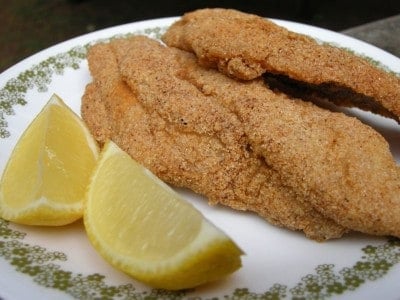Although the Irish didn’t invent Soda Bread it is most often identified with them. The “soft wheat” is the only suitable flour that can grow in Ireland’s climate, and when mixed like a traditional dough it doesn’t form any gluten like a traditional yeast bread, it does work well with a soda bread recipe.
The Idea of using soda to leaven bread was done by the American Indians centuries ago, where they used pearl-ash or Potash (a natural soda in wood ashes) in their breads to make them rise.
The cross on the soda bread has several explanations, Legend has it that folks did it to “let the devil out” while it’s baking for good luck, and others say that it made it easy to divide into 4 pieces. It was also a symbol for a cross during Christian holidays.
Irish Soda Bread
- 4 to 4 1/2 cups flour
- 2 Tablespoons sugar
- 1 teaspoon salt
- 1 teaspoon baking soda
- 4 Tablespoons butter
- 1 cup raisins
- 1 large egg, lightly beaten
- 1 3/4 cups buttermilk
Method
1 Preheat oven to 425 degrees. Whisk together 4 cups of flour, the sugar, salt, and baking soda into a large mixing bowl.
2 Using your (clean) fingers (or two knives or a pastry cutter), work the butter into the flour mixture until it resembles coarse meal, then add in the raisins.
3 Make a well in the center of the flour mixture. Add beaten egg and buttermilk to well and mix in with a wooden spoon until dough is too stiff to stir. Dust hands with a little flour, then gently knead dough in the bowl just long enough to form a rough ball. If the dough is too sticky to work with, add in a little more flour. Do not over-knead! Transfer dough to a lightly floured surface and shape into a round loaf. Note that the dough will be a little sticky, and quite shaggy (a little like a shortcake biscuit dough). You want to work it just enough so that the flour is just moistened and the dough just barely comes together. Shaggy is good. If you over-knead, the bread will end up tough.
4 Transfer dough to a large, lightly greased cast-iron skillet or a baking sheet (it will flatten out a bit in the pan or on the baking sheet). Using a serrated knife, score top of dough about an inch and a half deep in an “X” shape. The purpose of the scoring is to help heat get into the center of the dough while it cooks. Transfer to oven and bake until bread is golden and bottom sounds hollow when tapped, about 35-45 minutes. (If you use a cast iron pan, it may take a little longer as it takes longer for the pan to heat up than a baking sheet.) Check for doneness also by inserting a long, thin skewer into the center. If it comes out clean, it’s done.
Hint 1: If the top is getting too dark while baking, tent the bread with some aluminum foil.
Hint 2: If you use a cast iron skillet to cook the bread in the oven, be very careful when you take the pan out. It’s easy to forget that the handle is extremely hot. Cool the handle with an ice cube, or put a pot holder over it.
Remove pan or sheet from oven, let bread sit in the pan or on the sheet for 5-10 minutes, then remove to a rack to cool briefly. Serve bread warm, at room temperature, or sliced and toasted. Best when eaten warm and just baked.










